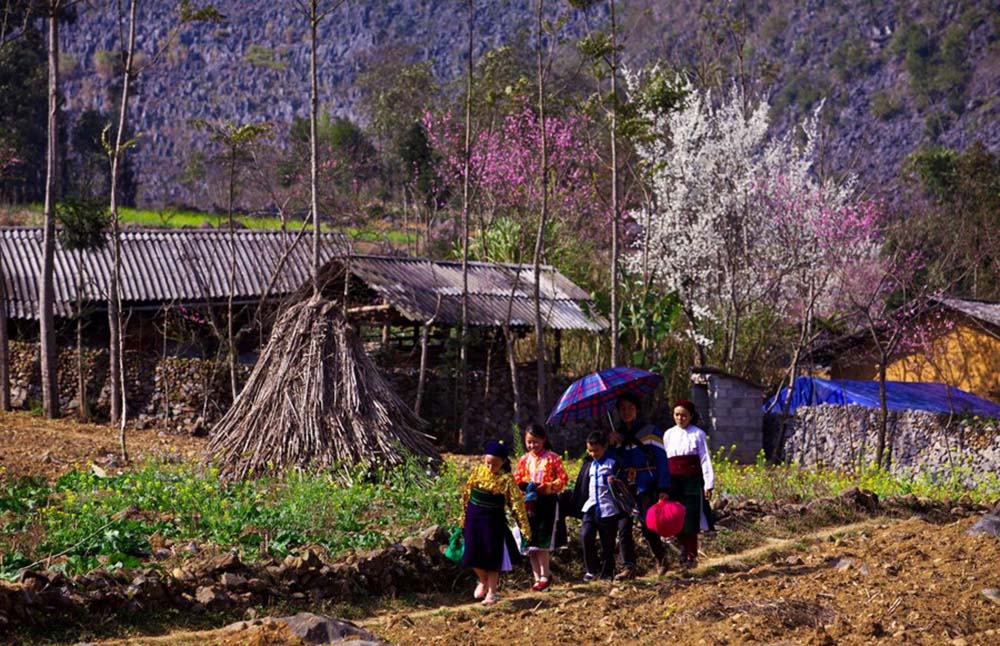
"Early Tet" has long become a unique cultural feature, unique to the Mong people in particular and the land of Ha Giang in general. Join LV Travel to explore Hmong New Year in Ha Giang to know and love this promised land more.
1. Tet holiday time in Ha Giang
Mong people in Ha Giang celebrate Tet in December, one month earlier than the rest of the country. Around December 25 and 26 every year, Mong people begin to stop work, rest, and prepare for Tet.
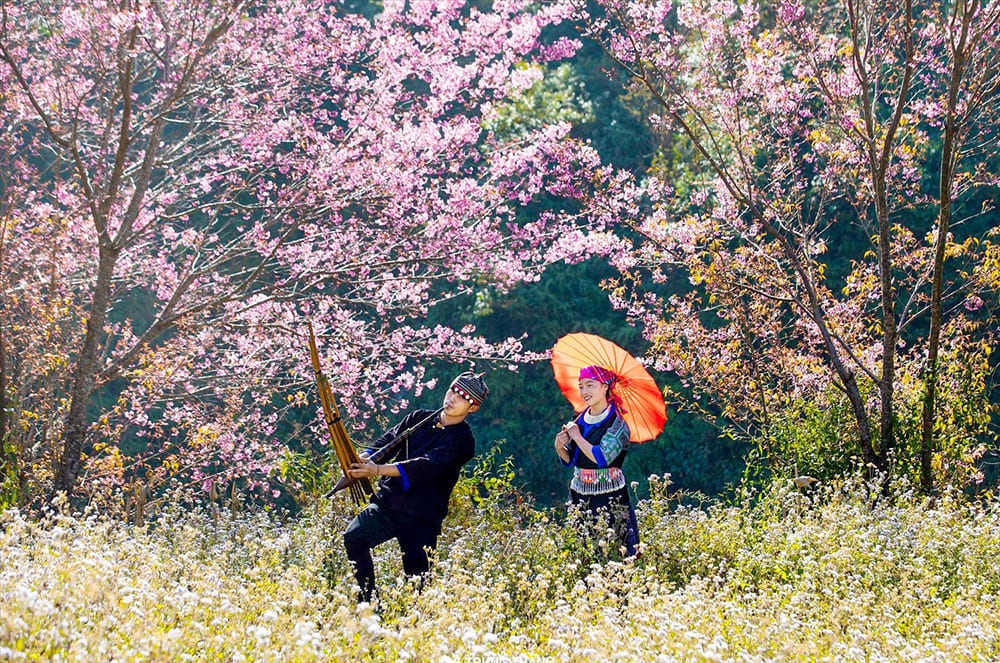 The scenery of Ha Giang in the spring day
The scenery of Ha Giang in the spring day
Ha Giang these days is truly stunningly beautiful. The beauty of the harmony of the flowers blooming in Spring and the colors of the brocade dresses of the H'mong people, the ethnic boys and girls take to the streets to celebrate Tet and travel in spring.
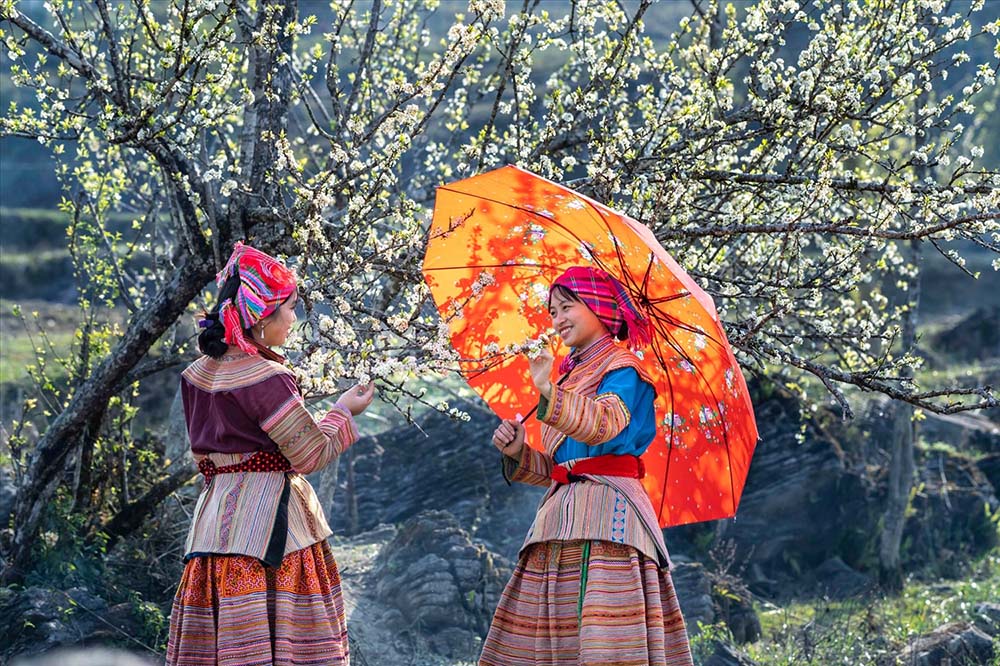
2. Unique features of Hmong New Year in Ha Giang
Not just earlier, Tet of the Mong people in Ha Giang has its own characteristics, extremely interesting and unique.
After completing their farm work, they rest after a year of hard work and prepare to prepare for Tet. The Mong people live mainly from agricultural activities, and production tools are extremely meaningful to them. So, after stopping the work, they redeployed all the production tools. Each thing is "consecrated" by them in different forms, for example, blacksmiths must have a closing ceremony, corn mills must be taken apart, a piece of paper must be glued on, and a ceremony must be held with chicken, corn cakes and alcohol.
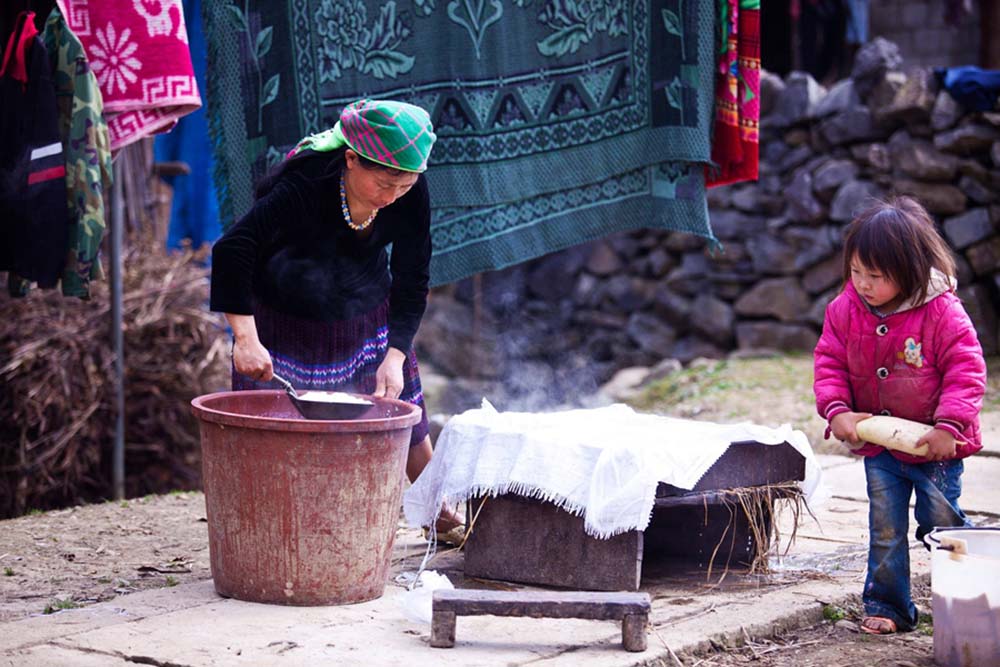
The H'Mong people believe that all animals in the house that work hard all year round should be able to celebrate Tet like people, so from New Year's Eve every family cooks porridge to feed the cattle, pigs, and chickens on the morning of the first day.
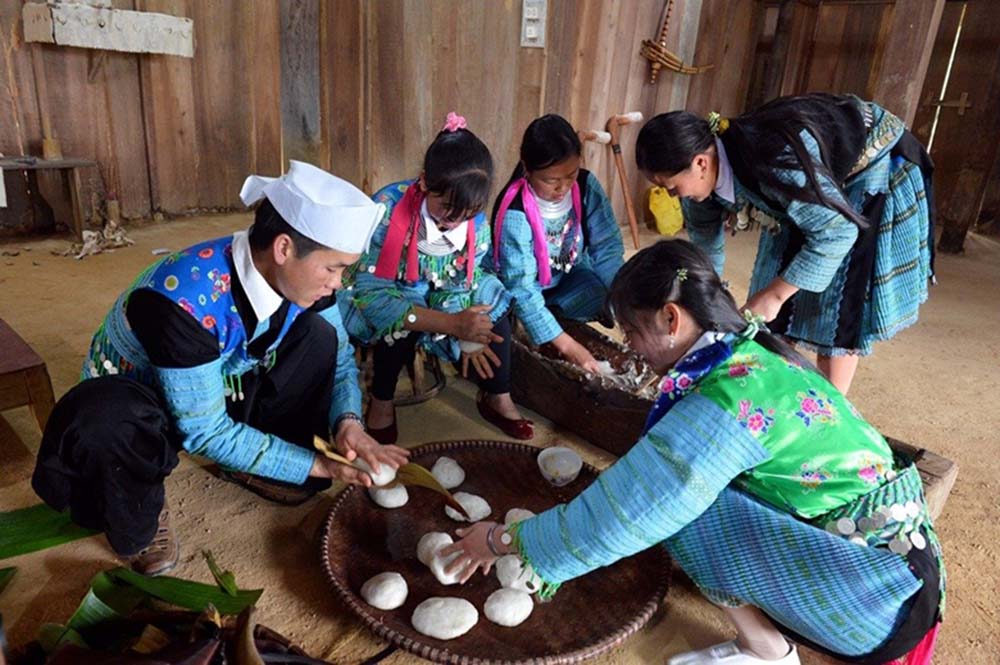
Banh chung is not very important during Tet, but for H'Mong people, the three indispensable dishes are meat, corn wine and corn cakes. During Tet, every family must have a tray of banh day made from upland sticky rice grains grown by the H'Mong people themselves.
Delicious sticky rice is cooked into sticky rice, poured into a bamboo basket and the young men in the house use a wooden pestle to pound it until it is very smooth, then shape it into a ball and place it on a fresh banana leaf.
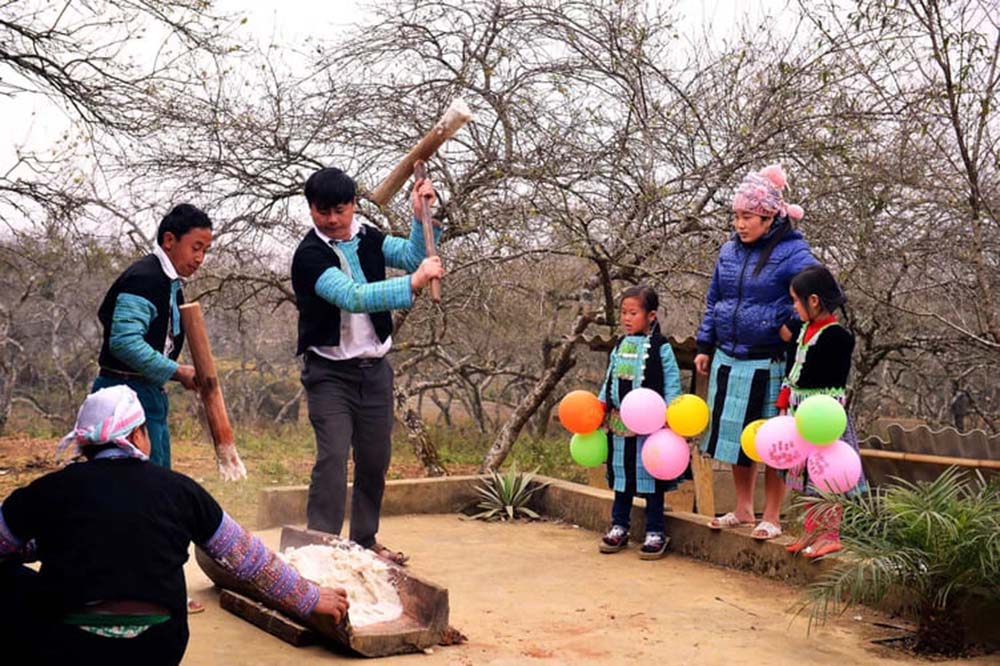
During Tet, depending on each hamlet and village, the H'Mong people hold banh day pounding contests. The house that can make banh day that is both flexible, fragrant, and beautifully round will be rewarded. The reward is that tray of thick cakes.
Another quite elaborate job is making corn wine. This is wine made with corn grown by the H'Mong people. The yeast is made from many types of forest leaves and roots, so the drink has a fragrant and slightly sweet taste.
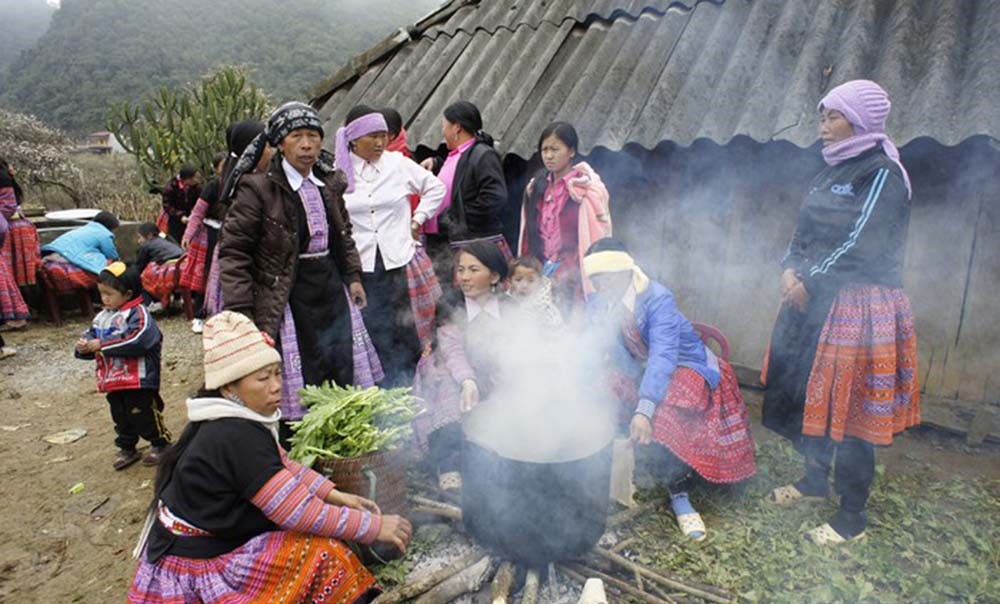
H'Mong people do not celebrate New Year's Eve. For them, the first rooster crowing in the early morning of the first day is the milestone marking the beginning of a new year.
From midnight on the 30th, people make offerings to the Ancestors with a live pig and a live rooster and then bring the pig and chicken to slaughter. They cooked a feast then ate rice and drank wine until they heard the first cock crow.
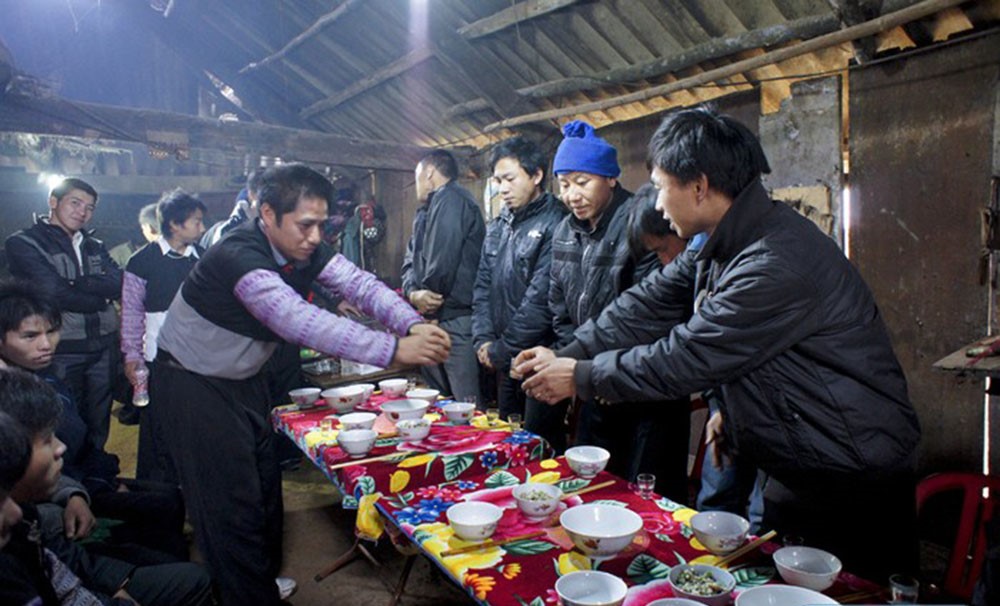
Before Tet, every family chooses to buy banknotes. The head of the family personally cuts them into silver coins and then sticks those silver coins on the pillars, doors of the house, daily objects, and even the livestock area.
H'Mong people believe that it is gold, silver, and money to bless the family for a new year with good harvests, prosperity, and health.
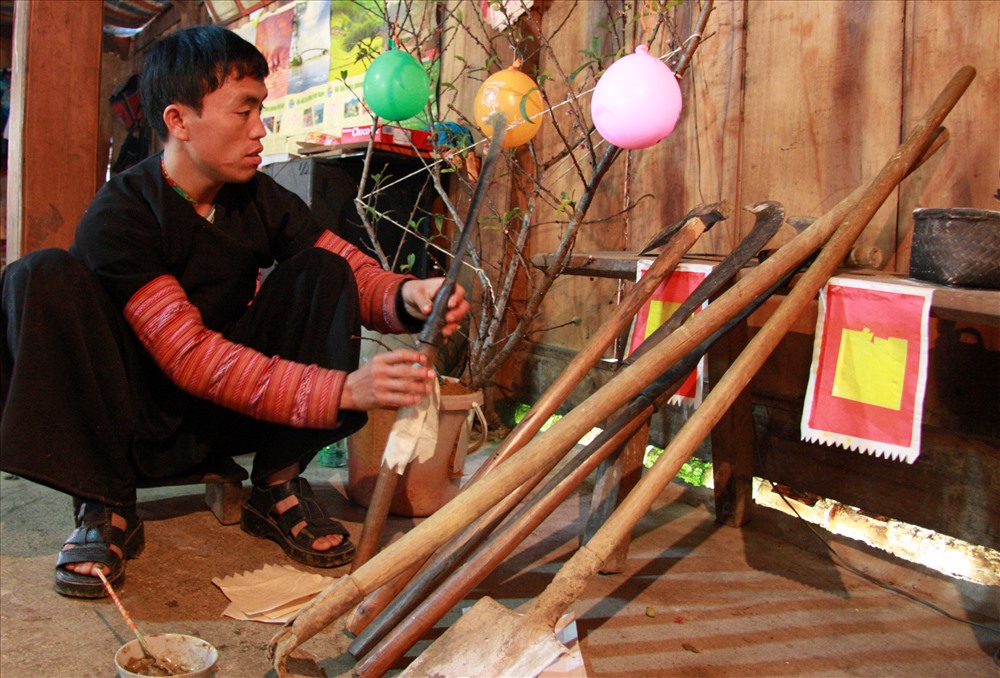
The altar of the H'Mong people is placed in the middle of the house facing the door and decorated simply. The altar is not wiped with a towel, not washed with water, nor swept, only swept with a three-headed bamboo broom. taken by the elderly in the family from the top of a mountain peak facing the East of the village.
In particular, the H'Mong people always keep incense on the Ancestor altar burning during the three days of Tet so that the kitchen god always keeps the flame to chase away evil spirits and wild beasts.
During the first days of the new year, H'Mong people abstain from sweeping the house. If they do sweep, they only sweep it inside and do not throw it away because they believe that if they do so, they will lose their wealth in the new year.
Not only that, during Tet, there are many interesting things about firewood of the H'Mong people. They are allowed to light a fire but are not allowed to blow it because they think that doing so will bring storms to their family all year round.
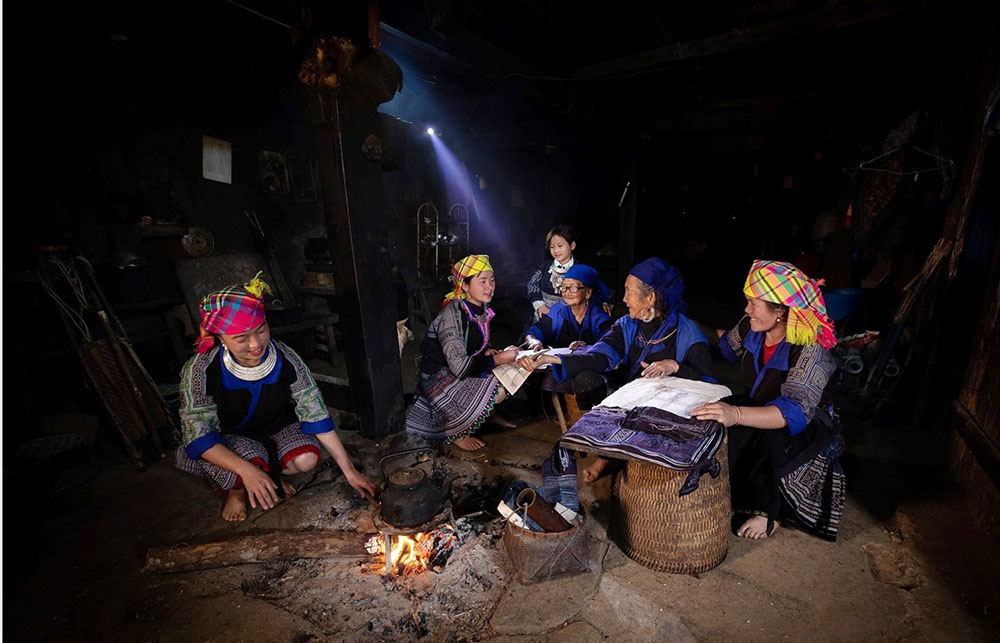
In the first days of the new year, H'Mong people go to each other's houses to wish each other a happy new year, drink a bowl of wine together, eat a piece of thick cake together, and wish each other good things in the new year.
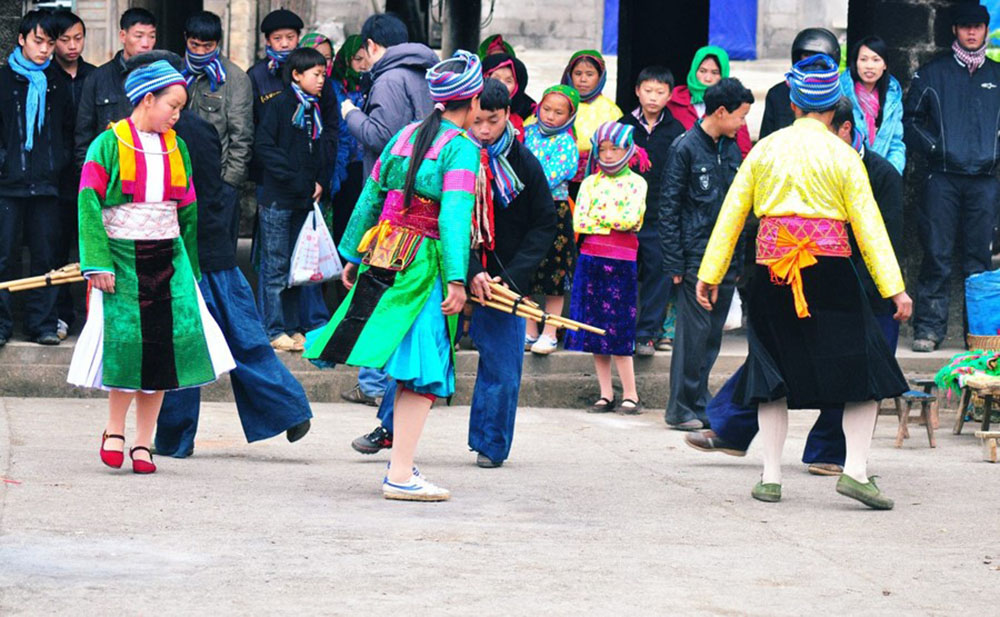
During Tet days, H'Mong boys and girls often organize folk games such as: Throwing Pao, playing Badminton, playing Spinning or blowing Khen, umbrella dancing, pipe singing, pushing sticks, tug of war, crossbow shooting and horse racing.
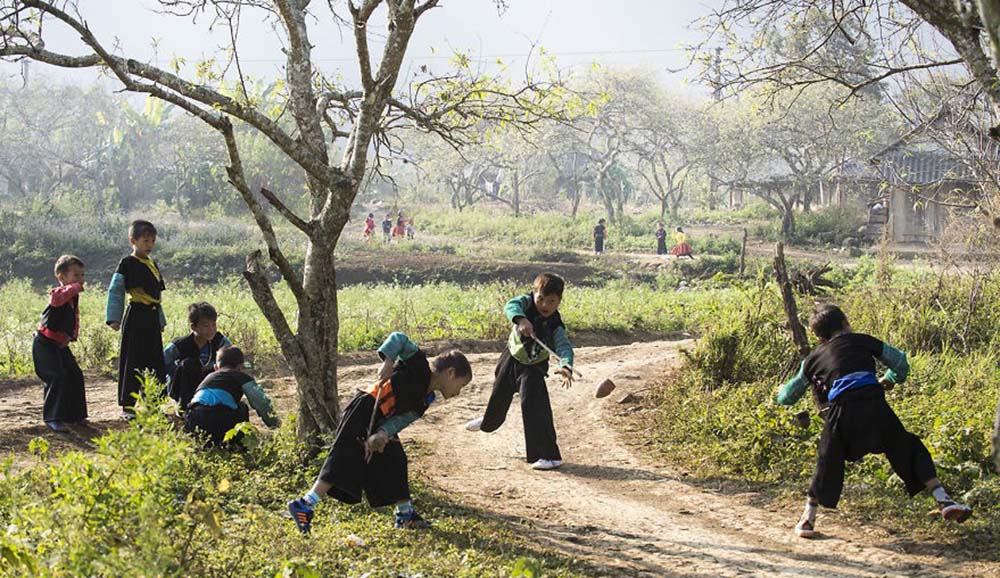
In particular, when talking about Tet of the H'Mong people, it is impossible not to mention the Sai San or Gau Tao festival (good luck festival).

A family in the village, if they are often sick or have few children, will go early in the morning of the 2nd day of Tet to build a large tree in the grass at the beginning of the village. This festival is organized by a family but it is a community festival. Even when this village sets up a tree, other villages also come to attend the festival.
Gau Tao Festival aims to thank the Ancestors for crops and animals, and pray for good health for children and grandchildren. The festival lasts 3 days, this is the biggest festival of the H'Mong people of the year and it most clearly shows the H'Mong cultural characteristics of Tet.
